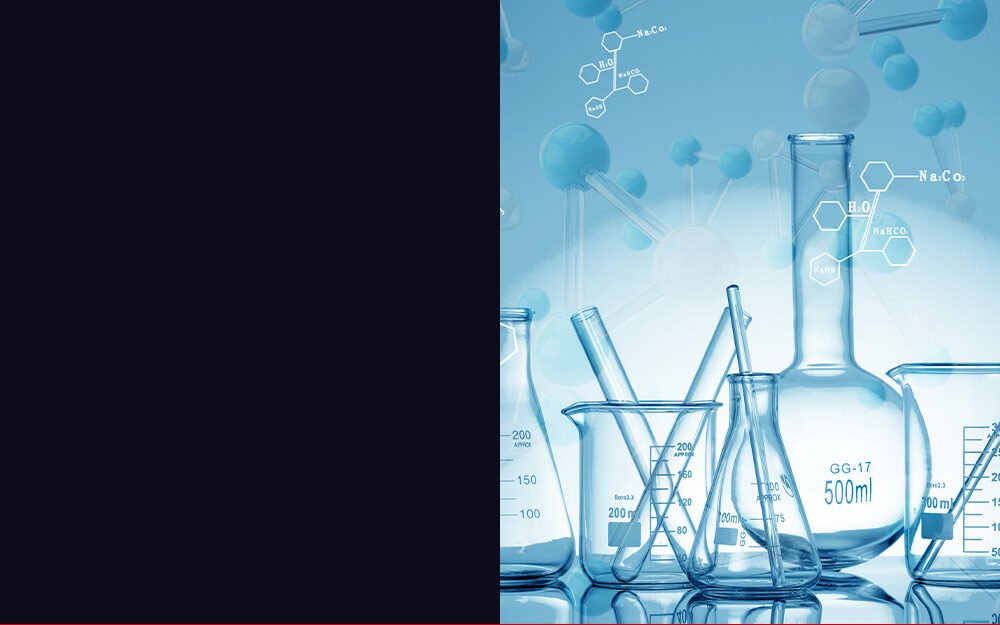溶融ネオペンチルグリコールは、NPG 溶融としても知られ、さまざまな業界で大きな注目を集めている化合物です。そのユニークな特性と多用途性により、幅広い用途に理想的な選択肢となります。この記事では、溶融ネオペンチルグリコールの特徴、さまざまな分野での用途、現代世界におけるその重要性について探っていきます。
目次
- 序章
- ネオペンチルグリコールモルテンとは何ですか?
- Production of Neopentyl Glycol Molten
- Physical and Chemical Properties
- Applications in the Paint and Coatings Industry
- Neopentyl Glycol Molten in the Adhesive Industry
- Neopentyl Glycol Molten in Polyester Resins
- その他の産業用途
- Environmental and Safety Considerations
- Future Outlook for Neopentyl Glycol Molten
- 結論
- よくある質問
序章
Neopentyl glycol molten is a highly versatile compound that finds applications in various industries due to its unique properties. It is a solid substance at room temperature and transforms into a molten state when heated. The molten form of neopentyl glycol offers distinct advantages in terms of handling and application.
とは ネオペンチルグリコール 溶けた?

Neopentyl Glycol Molten, commonly referred to as NPG Molten, is a substance that exists in a molten state at elevated temperatures. It is derived from neopentyl glycol, which is a polyhydric alcohol. Neopentyl Glycol Molten possesses unique properties and characteristics that make it highly versatile and suitable for various applications.
Neopentyl Glycol Molten is produced through a series of processes. It begins with the reaction between formaldehyde and isobutyraldehyde, resulting in the formation of pentaerythritol. This pentaerythritol is further treated with formaldehyde and subjected to hydrogenation, which ultimately leads to the production of neopentyl glycol. Through heating and melting processes, neopentyl glycol is transformed into its molten form, known as neopentyl glycol molten.
In its molten state, neopentyl glycol offers several advantageous properties. It has a melting point ranging from approximately 124 to 128 degrees Celsius, enabling easy handling and application when heated. The compound exhibits excellent solubility in various organic solvents and demonstrates remarkable thermal stability. Additionally, it has low volatility and a prolonged shelf life, further contributing to its utility in different industries.
Neopentyl Glycol Molten finds extensive applications in various sectors. One of its primary uses is in the paint and coatings industry, where it serves as a crosslinking agent and modifier. By incorporating neopentyl glycol molten into paints and coatings, manufacturers can enhance the durability, adhesion, and chemical resistance of the final products. This makes them suitable for demanding applications in automotive, industrial, and architectural settings.
Furthermore, neopentyl glycol molten plays a significant role in the adhesive industry. It is utilized as a vital ingredient in the formulation of high-performance adhesives. Its addition improves the bonding strength, flexibility, and heat resistance of adhesives, making them ideal for applications in woodworking, construction, packaging, and other bonding requirements.
Another notable application of neopentyl glycol molten is in polyester resins. These resins are widely used in the manufacturing of fiberglass-reinforced plastics, paints, and varnishes. By incorporating neopentyl glycol molten into polyester resins, their mechanical properties, including tensile strength, impact resistance, and heat stability, are enhanced. This makes them suitable for diverse industrial applications.
Production of Neopentyl Glycol Molten
The production process of Neopentyl Glycol Molten involves several steps to transform neopentyl glycol into its molten form.
The first step in the production process begins with the reaction between formaldehyde and isobutyraldehyde. This reaction leads to the formation of pentaerythritol, a key intermediate compound. Pentaerythritol serves as the starting material for the production of neopentyl glycol.
In the next stage, pentaerythritol is subjected to further treatment. It is reacted with formaldehyde and undergoes a hydrogenation process. This series of reactions results in the synthesis of neopentyl glycol. Neopentyl glycol is a white, odorless, and crystalline compound with excellent stability and compatibility.
Once neopentyl glycol is obtained, it can be transformed into its molten state through heating and melting processes. The solid neopentyl glycol is heated to a specific temperature range, typically between 124 to 128 degrees Celsius. As the temperature increases, neopentyl glycol undergoes a phase change and becomes a molten liquid. This molten form of neopentyl glycol is known as Neopentyl Glycol Molten or NPG Molten.
The production of Neopentyl Glycol Molten requires precision and adherence to specific reaction conditions. It is essential to ensure the purity and quality of the starting materials, as well as carefully control the reaction parameters throughout the synthesis process. This ensures the desired properties and characteristics of Neopentyl Glycol Molten are achieved.
The production of Neopentyl Glycol Molten is carried out in specialized manufacturing facilities that employ stringent quality control measures. These facilities are equipped with the necessary equipment and infrastructure to handle the reaction processes safely and efficiently.
Physical and Chemical Properties
Neopentyl Glycol Molten exhibits a range of notable physical and chemical properties that contribute to its versatility and usefulness in various applications.
In terms of physical properties, Neopentyl Glycol Molten is a solid substance at room temperature. However, it undergoes a phase change and transforms into a molten liquid state when exposed to elevated temperatures. The melting point of Neopentyl Glycol Molten typically falls within the range of approximately 124 to 128 degrees Celsius.
Chemically, Neopentyl Glycol Molten is highly stable and compatible with a wide range of substances. It demonstrates excellent solubility in various organic solvents, allowing for easy integration into different formulations and processes. This solubility property contributes to the compound’s versatility and its ability to act as a building block in the synthesis of resins, coatings, adhesives, and other products.
Neopentyl Glycol Molten possesses outstanding thermal stability, which makes it suitable for applications involving high temperatures. It can withstand elevated temperatures without undergoing degradation or significant changes in its chemical structure. This thermal stability is particularly important in industries such as paints, coatings, and adhesives, where products may be subjected to heat during application or use.
Applications in the Paint and Coatings Industry
Neopentyl Glycol Molten plays a vital role in the paint and coatings industry, offering numerous benefits and applications. Its unique properties make it an excellent choice for enhancing the performance and durability of paints and coatings in various settings.
One of the primary applications of Neopentyl Glycol Molten in the paint and coatings industry is as a crosslinking agent and modifier. When incorporated into paint formulations, it acts as a bridge between the polymer chains, creating a three-dimensional network that improves the coating’s mechanical properties. This crosslinking process enhances the coating’s resistance to chemicals, weathering, abrasion, and impact, resulting in a more durable and long-lasting finish.
Neopentyl Glycol Molten also provides improved adhesion properties in paints and coatings. It enhances the bonding strength between the coating and the substrate, ensuring better adhesion and reducing the risk of delamination or peeling. This is particularly important in demanding applications such as automotive coatings, industrial coatings, and architectural finishes, where adhesion is crucial for long-term performance.
Furthermore, Neopentyl Glycol Molten contributes to the chemical resistance of paints and coatings. It helps protect the coating against degradation caused by exposure to harsh chemicals, solvents, and environmental factors. This chemical resistance ensures that the coating maintains its integrity and appearance even in challenging conditions, extending its lifespan and providing enhanced protection to the substrate.
The use of Neopentyl Glycol Molten in the paint and coatings industry also allows for improved film formation and leveling properties. It promotes the flow and leveling of the coating during application, resulting in a smooth and uniform finish. This attribute is highly desirable in applications where aesthetic appeal and surface quality are important, such as architectural coatings and high-end finishes.
Neopentyl Glycol Molten in the Adhesive Industry
Neopentyl Glycol Molten holds significant importance in the adhesive industry, offering valuable properties that enhance the performance and versatility of adhesives across various applications.
One of the key contributions of Neopentyl Glycol Molten to the adhesive industry is its ability to improve bonding strength. When incorporated into adhesive formulations, it enhances the adhesive’s ability to create strong and reliable bonds between different substrates. This is particularly crucial in demanding applications where the adhesive needs to withstand high stress, vibration, or varying environmental conditions.
In addition to bonding strength, Neopentyl Glycol Molten enhances the flexibility of adhesives. It helps to improve the adhesive’s ability to withstand movement and deformation without compromising the bond. This flexibility is essential in applications that involve materials with different coefficients of thermal expansion, such as in the automotive, aerospace, and electronics industries.
Neopentyl Glycol Molten also contributes to the heat resistance of adhesives. It enhances the adhesive’s ability to withstand elevated temperatures without losing its adhesive properties or integrity. This attribute is particularly valuable in applications where adhesives are exposed to heat during processing, curing, or in-service conditions.
Furthermore, Neopentyl Glycol Molten improves the overall performance of adhesives by enhancing their resistance to environmental factors. It helps to protect adhesives from degradation caused by exposure to moisture, chemicals, and other harsh conditions. This enhanced resistance ensures the longevity and reliability of adhesive bonds, even in challenging environments.
Another advantage of Neopentyl Glycol Molten in the adhesive industry is its contribution to improved viscosity control. By adjusting the amount of Neopentyl Glycol Molten in the adhesive formulation, manufacturers can achieve desired viscosity levels for specific applications. This control over viscosity enables the formulation of adhesives with optimal flow and application properties, ensuring precise and efficient bonding.
Neopentyl Glycol Molten in Polyester Resins
Neopentyl Glycol Molten plays a crucial role in the production of polyester resins, offering numerous benefits and enhancing the performance of these versatile materials in various applications.
One of the key contributions of Neopentyl Glycol Molten to polyester resins is its ability to improve mechanical properties. When incorporated into polyester resin formulations, Neopentyl Glycol Molten enhances the tensile strength, impact resistance, and heat stability of the resulting resin. This improvement in mechanical properties makes polyester resins suitable for a wide range of applications, including fiberglass-reinforced plastics, paints, varnishes, and composite materials.
Neopentyl Glycol Molten also contributes to the dimensional stability of polyester resins. It helps to reduce shrinkage during the curing process, ensuring that the resin retains its shape and size. This dimensional stability is particularly important in applications where precision and accuracy are critical, such as in the production of molded parts or components.
Furthermore, Neopentyl Glycol Molten enhances the chemical resistance of polyester resins. It provides a protective barrier that shields the resin from degradation caused by exposure to chemicals, solvents, and environmental factors. This chemical resistance ensures that polyester resin-based products maintain their integrity and performance, even in harsh or corrosive environments.
Neopentyl Glycol Molten also improves the compatibility of polyester resins with other materials. It enhances the resin’s ability to blend and interact with various additives, fillers, and reinforcements, allowing for the formulation of tailored resin systems with desired properties. This compatibility contributes to the versatility of polyester resins, enabling their use in diverse applications and facilitating the development of innovative products.
その他の産業用途

Neopentyl Glycol Molten finds applications in various other industrial sectors, further highlighting its versatility and value as a chemical compound. Its unique properties make it a preferred choice in these industries, contributing to the development of innovative and high-performance products.
One notable application of Neopentyl Glycol Molten is in the synthesis of synthetic lubricants. The compound’s thermal stability, chemical resistance, and compatibility with other substances make it suitable for formulating lubricants that can withstand high temperatures, heavy loads, and extreme conditions. Neopentyl Glycol Molten enhances the lubricating properties, oxidation resistance, and overall performance of synthetic lubricants, making them ideal for demanding applications in automotive, industrial machinery, and aerospace sectors.
Additionally, Neopentyl Glycol Molten serves as a building block in the production of plasticizers. Plasticizers are additives that improve the flexibility, durability, and workability of various plastic materials. The incorporation of Neopentyl Glycol Molten into plasticizer formulations enhances the plastic’s softness, elongation, and resistance to cold temperatures. This makes it beneficial for applications in industries such as construction, automotive, and packaging, where flexible and resilient plastic materials are required.
Neopentyl Glycol Molten also finds application in the pharmaceutical industry. Its chemical stability and compatibility with other substances make it suitable for use in the synthesis of pharmaceutical intermediates and active pharmaceutical ingredients (APIs). Neopentyl Glycol Molten contributes to the development of pharmaceutical compounds with enhanced stability, solubility, and bioavailability, ensuring their effectiveness and reliability in medicinal applications.
Environmental and Safety Considerations
When it comes to Neopentyl Glycol Molten, it is crucial to consider both environmental and safety aspects to ensure responsible handling and usage of this chemical compound.
From an environmental perspective, Neopentyl Glycol Molten is generally regarded as safe when proper precautions are taken. It does not pose significant risks to the environment if handled and disposed of correctly. However, it is essential to adhere to good industrial hygiene practices and follow established safety guidelines during its production, handling, and disposal to minimize any potential environmental impact.
In terms of safety considerations, Neopentyl Glycol Molten is relatively safe when used appropriately. It is important to handle the compound with care and take necessary precautions to prevent direct contact with the skin, eyes, or inhalation of vapors. Proper personal protective equipment (PPE), such as gloves and safety goggles, should be worn when working with Neopentyl Glycol Molten to minimize the risk of potential hazards.
As with any chemical substance, it is crucial to store Neopentyl Glycol Molten in appropriate containers and away from incompatible materials. Proper labeling and storage practices should be followed to prevent accidental mixing or contamination with other substances. This ensures the integrity and stability of the compound and minimizes the potential for safety incidents.
It is also important to consider the potential for fire hazards. While Neopentyl Glycol Molten is not highly flammable, it is recommended to store and handle it away from open flames, sparks, or other sources of ignition. Adequate fire safety measures should be in place, including fire-resistant storage areas and the availability of fire extinguishing equipment, to mitigate any fire risks.
Future Outlook for Neopentyl Glycol Molten
The future outlook for Neopentyl Glycol Molten is highly promising, with continued growth and expanding applications expected in various industries. As industries evolve and innovate, the unique properties and versatility of Neopentyl Glycol Molten position it as a valuable compound for addressing evolving needs and challenges.
In the paint and coatings industry, the demand for high-performance coatings is projected to rise, driven by factors such as increasing construction activities, infrastructure development, and automotive production. Neopentyl Glycol Molten’s role as a crosslinking agent and modifier in coatings ensures enhanced durability, chemical resistance, and adhesion. As these industry sectors continue to grow, Neopentyl Glycol Molten will remain an essential ingredient in the formulation of advanced coatings.
Similarly, in the adhesive industry, the need for high-performance adhesives is expected to increase due to advancements in manufacturing technologies and the demand for lightweight and durable bonding solutions. Neopentyl Glycol Molten’s ability to improve bonding strength, flexibility, and heat resistance in adhesives aligns with these requirements. Its applications in woodworking, construction, packaging, and other bonding applications will continue to grow as industries seek reliable and efficient adhesive solutions.
The polyester resin industry is also projected to witness substantial growth in the coming years. Polyester resins find applications in a wide range of sectors, including automotive, construction, and consumer goods. Neopentyl Glycol Molten’s contributions to enhancing mechanical properties, dimensional stability, and chemical resistance of polyester resins position it as a key component for meeting the growing demand for high-performance materials in these industries.
結論
Neopentyl glycol molten is a versatile compound with a wide range of applications across industries. Its unique properties, such as thermal stability, chemical resistance, and compatibility, make it an invaluable ingredient in the formulation of paints, adhesives, polyester resins, and more. As industries continue to innovate and develop new products, neopentyl glycol molten will undoubtedly remain a key component in their success.
よくある質問
- What are the main properties of ネオペンチルグリコール molten?
Neopentyl glycol molten possesses properties such as excellent thermal stability, chemical resistance, and solubility in organic solvents. - In which industries is neopentyl glycol molten commonly used?
Neopentyl glycol molten finds applications in industries like paints and coatings, adhesives, polyester resins, synthetic lubricants, and more. - What role does neopentyl glycol molten play in the paint and coatings industry?
Neopentyl glycol molten acts as a crosslinking agent and modifier, enhancing the durability and adhesion of paints and coatings. - Is neopentyl glycol molten safe to use?
When handled and used properly, neopentyl glycol molten is considered safe. It is essential to follow safety guidelines during its production and handling. - What does the future hold for neopentyl glycol molten?
The demand for neopentyl glycol molten is expected to grow, driven by advancements in industries such as paints and coatings, adhesives, and polyester resins.



